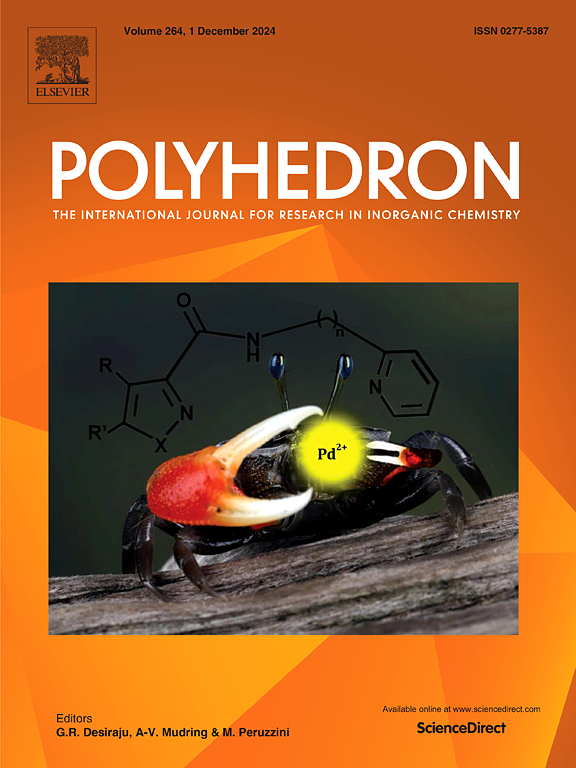A theoretical insight on the halogen and hydrogen bonding interactions in the solid state structures of mononuclear zinc(II) complexes with salen type Schiff base ligands
IF 2.4
3区 化学
Q2 CHEMISTRY, INORGANIC & NUCLEAR
引用次数: 0
Abstract
In this manuscript we report the synthesis of two new zinc(II) complexes, [ZnL1(H2O)] (1) and [ZnL2(DMSO)] (2), characterized by elemental and spectral analysis {H2L1 and H2L2 are the tetradentate symmetrical salen-type, di-Schiff base ligands}. The structures have been confirmed by single-crystal X-ray diffraction analysis. The coordination polyhedron around the zinc(II) centers are elongated (4 + 1) square pyramid and distorted trigonal bipyramidal with ZnN2O3 chromophore, furnished by two imine nitrogen atoms and two phenolate oxygen atoms of the deprotonated Schiff base ligand, forming the basal plane; and an oxygen atom from a water molecule (in complex 1) or a DMSO molecule (in complex 2) occupying the apical position of zinc(II) center. Complex 1 forms strong self-assembled 1-D chain in the solid state. In contrast, complex 2, that incorporates DMSO in the coordination sphere, forms halogen bonding assemblies. Both types of interactions have been analyzed using DFT calculations and a variety of computational tools (MEP, NBO, QTAIM and NCIplot).

求助全文
约1分钟内获得全文
求助全文
来源期刊

Polyhedron
化学-晶体学
CiteScore
4.90
自引率
7.70%
发文量
515
审稿时长
2 months
期刊介绍:
Polyhedron publishes original, fundamental, experimental and theoretical work of the highest quality in all the major areas of inorganic chemistry. This includes synthetic chemistry, coordination chemistry, organometallic chemistry, bioinorganic chemistry, and solid-state and materials chemistry.
Papers should be significant pieces of work, and all new compounds must be appropriately characterized. The inclusion of single-crystal X-ray structural data is strongly encouraged, but papers reporting only the X-ray structure determination of a single compound will usually not be considered. Papers on solid-state or materials chemistry will be expected to have a significant molecular chemistry component (such as the synthesis and characterization of the molecular precursors and/or a systematic study of the use of different precursors or reaction conditions) or demonstrate a cutting-edge application (for example inorganic materials for energy applications). Papers dealing only with stability constants are not considered.
 求助内容:
求助内容: 应助结果提醒方式:
应助结果提醒方式:


